
漢德百科全書 | 汉德百科全书
 League of Legends
League of Legends







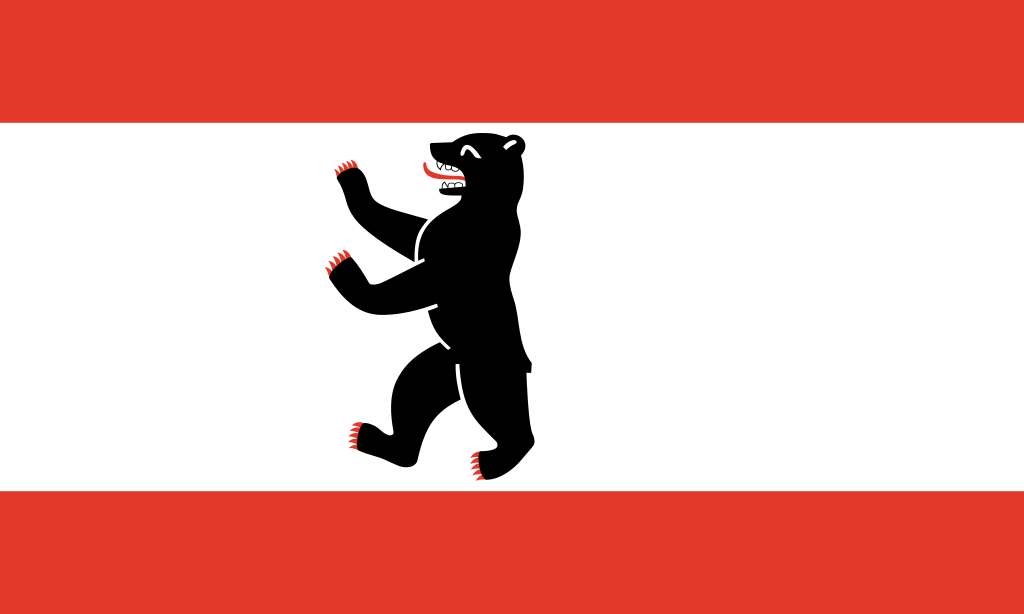 Berlin
Berlin
 Germany
Germany
 FIFA Fussball-Weltmeisterschaft 2006
FIFA Fussball-Weltmeisterschaft 2006

 UEFA European Championship 2024
UEFA European Championship 2024
 Women's Soccer World Cup 2011
Women's Soccer World Cup 2011

 History
History

 International cities
International cities
 *European Capital of Culture
*European Capital of Culture
 League of Legends
League of Legends
 League of Legends World Championship
League of Legends World Championship
 Olympic Summer Games
Olympic Summer Games
 Silk road
Silk road

 World Heritage
World Heritage
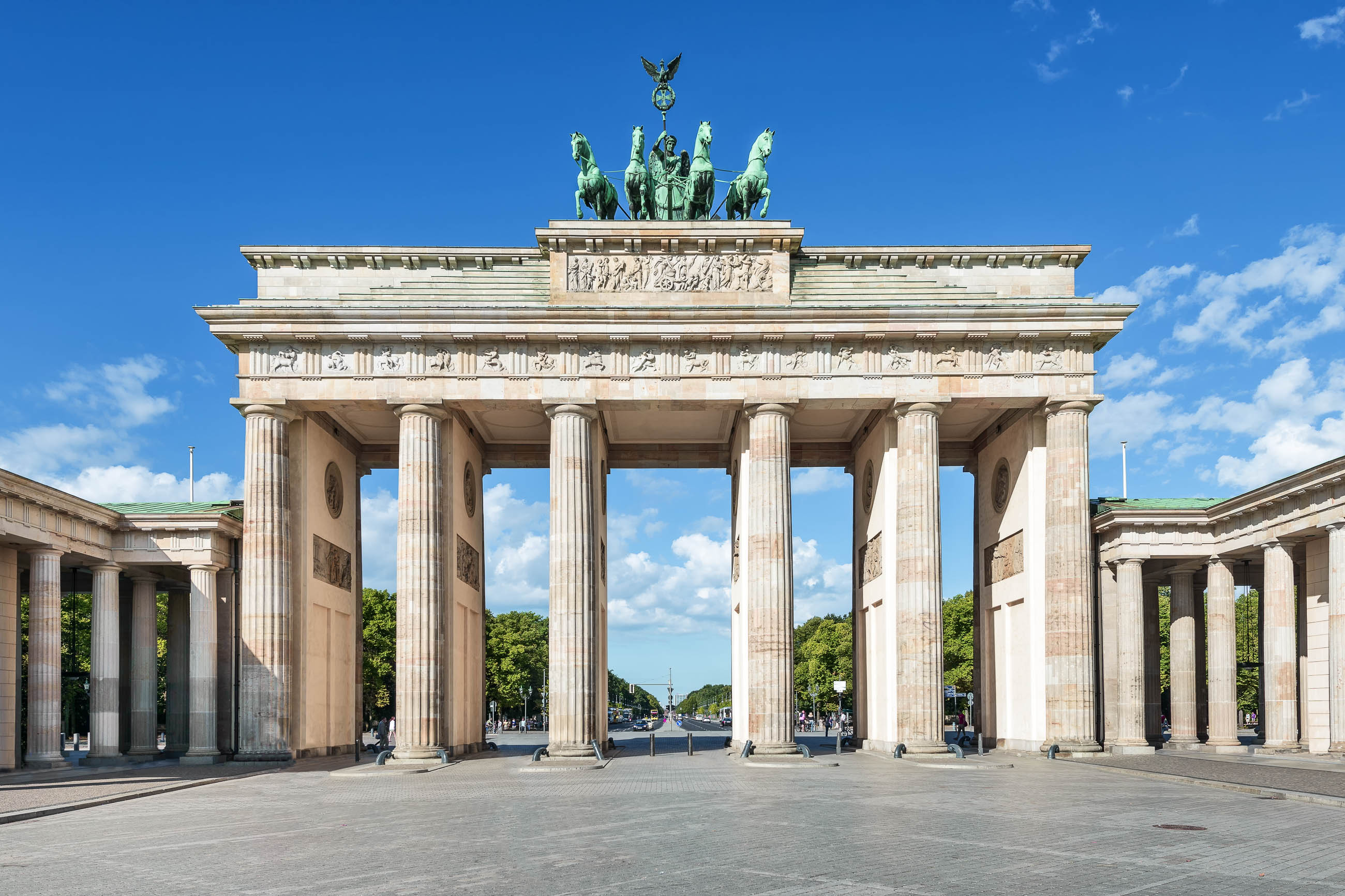
柏林(德语:Berlin,德语发音: [bɛɐ̯ˈliːn] (![]() listen))是德国首都,也是德国最大的城市,现有居民约340万人。柏林位于德国东北部,四面被勃兰登堡州环绕,施普雷河和哈维尔河流经该市。柏林也是德国十六个联邦州之一,和汉堡、不来梅同为德国僅有的三個的城市州。
listen))是德国首都,也是德国最大的城市,现有居民约340万人。柏林位于德国东北部,四面被勃兰登堡州环绕,施普雷河和哈维尔河流经该市。柏林也是德国十六个联邦州之一,和汉堡、不来梅同为德国僅有的三個的城市州。
柏林是欧盟區內人口第2多的城市以及城市面积第8大的城市。它是柏林-勃兰登堡都会区的中心,有来自超过190个国家的5百万人口。地理上位于欧洲平原,受温带季节性气候影响。城市周围三分之一的土地由森林、公园、花园、河流和湖泊组成。
该市第一次有文字记载是在13世纪,柏林连续的成为以下这些国家的首都:普鲁士王国(1701年-1870年)、德意志帝国(1871年-1918年)、魏玛共和国(1919年-1933年)、納粹德國(1933年-1945年)。在1920年代,柏林是世界第3大自治市。第二次世界大战后,城市被分割;东柏林成为了东德的首都,而西柏林事实上成为了西德在东德的一块飛地,被柏林墙围住。直到1990年两德统一,该市重新获得了全德国首都的地位,驻有147个外国大使馆。
柏林无论是从文化、政治、传媒还是科学上讲都称的上是世界级城市。该市经济主要基于服务业,包括多种多样的创造性产业、传媒集团、议会举办地点。柏林扮演了一个欧洲大陆上航空与铁路运输交通枢纽的角色,同时它也是欧盟内游客数量最多的城市之一。主要的产业包括信息技术、制药、生物工程、生物科技、光学电子、交通工程和可再生能源。
柏林都会区有知名大学、研究院、体育赛事、管弦乐队、博物馆和知名人士。城市的历史遗存使该市成为国际电影产品的交流中心。该市在节日活动、建筑的 多样化、夜生活、当代艺术、公共交通网络以及高质量生活方面得到了广泛认可。柏林已经发展成一个全球焦点城市,以崇尚自由生活方式和现代精神的年轻人和艺 术家而闻名。
ベルリン(独: Berlin ドイツ語発音: [bɛɐ̯ˈliːn] (![]() 音声ファイル)、伯林)は、ドイツ北東部、ベルリン・ブランデンブルク大都市圏地域の中心に位置する都市である。16ある連邦州のうちの一つで、市域人口は350万人[1]とドイツでは最大の都市で欧州連合の市域人口ではロンドンに次いで2番目に多く、都市的地域の人口は7番目に多い。[3]同国の首都と定められている[4]。
音声ファイル)、伯林)は、ドイツ北東部、ベルリン・ブランデンブルク大都市圏地域の中心に位置する都市である。16ある連邦州のうちの一つで、市域人口は350万人[1]とドイツでは最大の都市で欧州連合の市域人口ではロンドンに次いで2番目に多く、都市的地域の人口は7番目に多い。[3]同国の首都と定められている[4]。
ベルリンが属するベルリン・ブランデンブルク大都市圏地域(英語版)の人口は590万人に達し[6]、190カ国を超える海外出身者も暮らす[7]。ベルリンはヨーロッパ平原(英語版)に位置し温帯の季節的な気候の影響を受ける。市域の3分の1は森林、公園、庭園、河川や湖で構成されている[8]。ベルリンが最初に文書に言及されたのは13世紀のことで、それ以後プロイセン王国(1701-1918)やドイツ帝国(1871-1918)、ヴァイマル共和政(1919-1933)、ナチス・ドイツ(1933-1945)の首都であった[9]。1920年には「大ベルリン」の成立により市域が大幅に拡大し、現在とほぼ同じ領域となった。1920年代には世界で3番目に大きな都市であった[10]。第二次世界大戦後、ベルリンは東ドイツの首都である東ベルリンと、西ドイツの事実上の飛び地で周辺をベルリンの壁(1961-1989)で囲まれた西ベルリンに分断された[11]。1990年のドイツ再統一によりベルリンは再び首都としての地位を得て[12]、147の大使館が置かれる[13][14]。ベルリンは文化や政治、メディア、科学の世界都市である[15][16][17]。アメリカのシンクタンクが2017年に発表した総合的な世界都市ランキングにおいて、世界14位の都市と評価された[18]。
経済的にはサービス産業を基盤とし創造産業やメディア産業、コンベンション会場などが包括されている。ベルリンはまた、欧州大陸の航空や鉄道交通の中枢でもあり[19][20] 、代表的な観光地である。重要な産業にはIT、製薬、生物医学技術、生物工学、電子工学、交通工学、再生可能エネルギーが含まれる。 ベルリンは有名な大学や調査機関、管弦楽団、博物館、著名人が本拠としており多くのスポーツイベントも催されている他[21]、都市の光景や歴史的な遺産は国際的な映画製作には人気な場所となっている[22]。ベルリンでは多く祭典や多様な建築、ナイトライフ、現代芸術、公共交通機関の路線網、世界で最も居住に適した都市など様々な分野でも良く知られた都市である[23]。
ドイツ最大の都市であり立法・行政の中心地ではあるが、地方分権の歴史が長いドイツでは、司法の中心地はカールスルーエ、金融と交通の中心地はフランクフルト、産業の中心地はルール地方、ミュンヘン、シュトゥットガルト、ケルンとされ、東京(日本)やソウル(韓国)、パリ(フランス)のような一極集中という状態はない[24]。戦間期には科学技術や文学、哲学、芸術などが発展しヴァイマル文化によりドイツはもっとも進んだ国となった[25][26]。1988年の欧州文化首都に選ばれている[27]。現代の都市ベルリンは発展の一方で、特に東側の人口停滞などから都市構造の変革が進められている[28]。
Berlin  [bɛɐ̯ˈliːn] ist die Bundeshauptstadt der Bundesrepublik Deutschland und zugleich eines ihrer Länder.[12] Die Stadt Berlin ist mit rund 3,6 Millionen Einwohnern die bevölkerungsreichste und mit 892 Quadratkilometern die flächengrößte Gemeinde Deutschlands.[5] Sie bildet das Zentrum der Metropolregion Berlin/Brandenburg (rund 6 Millionen Einwohner) und der Agglomeration Berlin (rund 4,5 Millionen Einwohner). Der Stadtstaat besteht aus zwölf Bezirken. Neben den Flüssen Spree und Havel befinden sich im Stadtgebiet kleinere Fließgewässer sowie zahlreiche Seen und Wälder.
[bɛɐ̯ˈliːn] ist die Bundeshauptstadt der Bundesrepublik Deutschland und zugleich eines ihrer Länder.[12] Die Stadt Berlin ist mit rund 3,6 Millionen Einwohnern die bevölkerungsreichste und mit 892 Quadratkilometern die flächengrößte Gemeinde Deutschlands.[5] Sie bildet das Zentrum der Metropolregion Berlin/Brandenburg (rund 6 Millionen Einwohner) und der Agglomeration Berlin (rund 4,5 Millionen Einwohner). Der Stadtstaat besteht aus zwölf Bezirken. Neben den Flüssen Spree und Havel befinden sich im Stadtgebiet kleinere Fließgewässer sowie zahlreiche Seen und Wälder.
Urkundlich erstmals im 13. Jahrhundert erwähnt, war Berlin im Verlauf der Geschichte und in verschiedenen Staatsformen Residenz- und Hauptstadt Brandenburgs, Preußens und des Deutschen Reichs. Ab 1949 war der Ostteil der Stadt Hauptstadt der Deutschen Demokratischen Republik. Mit der deutschen Wiedervereinigung im Jahr 1990 wurde Berlin wieder gesamtdeutsche Hauptstadt und in der Folge Sitz der Bundesregierung, des Bundespräsidenten, des Bundestages, des Bundesrates sowie zahlreicher Bundesministerien und Botschaften.
Zu den bedeutenden Wirtschaftszweigen in Berlin gehören unter anderem der Tourismus, die Kreativ- und Kulturwirtschaft, die Biotechnologie und Gesundheitswirtschaft mit Medizintechnik und pharmazeutischer Industrie, die Informations- und Kommunikationstechnologien, die Bau- und Immobilienwirtschaft, der Handel, die Optoelektronik, die Energietechnik sowie die Messe- und Kongresswirtschaft. Die Stadt ist ein europäischer Knotenpunkt des Schienen- und Luftverkehrs. Berlin zählt zu den aufstrebenden, internationalen Zentren für innovative Unternehmensgründer und verzeichnet jährlich hohe Zuwachsraten bei der Zahl der Erwerbstätigen.[13]
Berlin gilt als Weltstadt der Kultur, Politik, Medien und Wissenschaften.[14][15][16][17] Die Universitäten, Forschungseinrichtungen, Sportereignisse und Museen Berlins genießen internationalen Ruf.[18] Die Metropole trägt den UNESCO-Titel Stadt des Designs und ist eines der meistbesuchten Zentren des Kontinents.[19] Berlins Architektur, Festivals, Nachtleben und vielfältige Lebensbedingungen sind weltweit bekannt.[20]
Berlin (/bɜːrˈlɪn/; German pronunciation: [bɛɐ̯ˈliːn]) is the capital and the largest city of Germany, as well as one of its 16 constituent states. With a steadily growing population of approximately 3.7 million,[4] Berlin is the second most populous city proper in the European Union behind London and the seventh most populous urban area in the European Union.[5] Located in northeastern Germany on the banks of the rivers Spree and Havel, it is the centre of the Berlin-Brandenburg Metropolitan Region, which has roughly 6 million residents.[6][7][8][9] Due to its location in the European Plain, Berlin is influenced by a temperate seasonal climate. Around one-third of the city's area is composed of forests, parks, gardens, rivers, canals and lakes.[10]
First documented in the 13th century and situated at the crossing of two important historic trade routes,[11] Berlin became the capital of the Margraviate of Brandenburg (1417–1701), the Kingdom of Prussia (1701–1918), the German Empire (1871–1918), the Weimar Republic (1919–1933), and the Third Reich (1933–1945).[12] Berlin in the 1920s was the third largest municipality in the world.[13] After World War II and its subsequent occupation by the victorious countries, the city was divided; West Berlin became a de facto West German exclave, surrounded by the Berlin Wall (1961–1989) and East German territory.[14] East Berlin was declared capital of East Germany, while Bonn became the West German capital. Following German reunification in 1990, Berlin once again became the capital of all of Germany.
Berlin is a world city of culture, politics, media and science.[15][16][17][18] Its economy is based on high-tech firms and the service sector, encompassing a diverse range of creative industries, research facilities, media corporations and convention venues.[19][20] Berlin serves as a continental hub for air and rail traffic and has a highly complex public transportation network. The metropolis is a popular tourist destination.[21] Significant industries also include IT, pharmaceuticals, biomedical engineering, clean tech, biotechnology, construction and electronics.
Berlin is home to world-renowned universities, orchestras, museums, and entertainment venues, and is host to many sporting events.[22] Its Zoological Garden is the most visited zoo in Europe and one of the most popular worldwide. With the world's oldest large-scale movie studio complex, Berlin is an increasingly popular location for international film productions.[23] The city is well known for its festivals, diverse architecture, nightlife, contemporary arts and a very high quality of living.[24] Since the 2000s Berlin has seen the emergence of a cosmopolitan entrepreneurial scene.[25]
Berlin (prononcé [bɛʁ.lɛ̃] ; en allemand Berlin [bɛɐ̯.ˈliːn] Écouter) est la capitale1 et la plus grande ville d'Allemagne. Institutionnellement, c’est une ville-État nommée Land de Berlin.
Située dans le nord-est du pays, Berlin compte environ 3,7 millions d'habitants2. Ses habitants s'appellent les Berlinois. Elle est la deuxième ville et la septième agglomération la plus peuplée de l'Union européenne. L'agglomération de Berlin s'étend sur 892 km2 et compte 4,4 millions d'habitants. La région métropolitaine de Berlin-Brandebourg qui cumule les Länder de Berlin et de Brandebourg regroupe au total près de 6 millions d'habitants.
Fondée au XIIIe siècle, Berlin a été successivement capitale de l'électorat du Brandebourg (1247-1701), du royaume de Prusse (1701-1871), de l'Empire allemand (1871-1918), de la République de Weimar (1919-1933) et du Troisième Reich (1933-1945). Après 1945 et jusqu'à la chute du mur de Berlin en 1989, la ville est partagée en quatre secteurs d'occupation. Pendant la Guerre froide, le secteur soviétique de la ville, nommé Berlin-Est, est devenu la capitale de la République démocratique allemande, tandis que Berlin-Ouest était politiquement rattachée à la République fédérale d'Allemagne, devenant ainsi un bastion avancé du « Monde libre » à l'intérieur du Bloc communiste. Après la chute du mur, Berlin redevint, en 1990, la capitale de l'Allemagne alors réunifiée, et les principales institutions fédérales y emménagèrent en 1999.
Berlin est une ville mondiale culturelle et artistique de premier plan. La ville abrite 166 musées, 142 bibliothèques et 60 théâtres. En 2014, Berlin a accueilli 11,87 millions de visiteurs (+4,8 % plus qu'en 2013)3, dont 4,52 millions de visiteurs étrangers (+5,2 %).
Berlino (AFI: /berˈlino/[2]; in tedesco: Berlin, /bɛɐ̪ ˈliːn/, ascolta[?·info]) è la maggiore città e anche un Bundesland della Germania, quindi una "città-stato". Capitale federale della Repubblica Federale di Germania e sede del suo governo, è uno dei più importanti centri politici, culturali, scientifici, fieristici e mediatici d'Europa e, dopo Londra, il secondo comune più popoloso dell'Unione europea, con 3.531.201 abitanti.
In passato è stata la capitale della Marca di Brandeburgo (1417-1801), del Regno di Prussia (1701-1918), dell'Impero tedesco (1871-1918), della Repubblica di Weimar (1919-1933) e del Terzo Reich (1933-1945).
L'area metropolitana ha una superficie complessiva di 2.851 km² ed una popolazione di 5.103.778 abitanti, mentre la regione metropolitana di Berlino e Brandeburgo ha una superficie di 30.370 km² ed una popolazione[3] di 7.220.12 abitanti.
Berlín (Berlin en alemán ( [bɛɐ̯ˈliːn] (?·i))) es la capital de Alemania y uno de los dieciséis estados federados alemanes. Se localiza al noreste de Alemania. Por la ciudad fluyen los ríos Esprea, Havel, Panke, Dahme y Wuhle. Con una población de 3,5 millones de habitantes, Berlín es la ciudad más poblada del país y de Europa Central, así como la primera ciudad en población y la séptima aglomeración urbana entre los países de la Unión Europea (si bien se convertirá en la sexta una vez la salida del Reino Unido de la Unión Europea se haga efectiva).2
[bɛɐ̯ˈliːn] (?·i))) es la capital de Alemania y uno de los dieciséis estados federados alemanes. Se localiza al noreste de Alemania. Por la ciudad fluyen los ríos Esprea, Havel, Panke, Dahme y Wuhle. Con una población de 3,5 millones de habitantes, Berlín es la ciudad más poblada del país y de Europa Central, así como la primera ciudad en población y la séptima aglomeración urbana entre los países de la Unión Europea (si bien se convertirá en la sexta una vez la salida del Reino Unido de la Unión Europea se haga efectiva).2
Fundada en 1237 como Cölln, Berlín fue sucesivamente capital del Reino de Prusia (1701-1918), de la República de Weimar (1919-1933) y del Tercer Reich (1933-1945). Después de la Segunda Guerra Mundial, la ciudad fue dividida; la parte este de la ciudad se convirtió en la capital de la República Democrática Alemana, mientras que la región oeste de la ciudad se convirtió en un enclave de la República Federal de Alemania en el interior de la Alemania Oriental.
Berlín es una ciudad mundial y un centro cultural y artístico de primer nivel. Es una de las ciudades más influyentes en el ámbito político de la Unión Europea y en 2006 fue elegida Ciudad Creativa por la Unesco.3 En 2009 la ciudad recibió el Premio Príncipe de Asturias de la Concordia.
Берли́н (нем. Berlin [bɛɐ̯ˈliːn], произношение (инф.)) — столица и крупнейший город Германии, второй по населению (после Лондона) и пятый по площади город Евросоюза.
Является одной из 16 земель в составе ФРГ. Город расположен на берегах рек:
- Шпрее (в связи с чем его называют «Афинами на Шпрее»),
- Хафель в центре федеральной земли Бранденбург (частью последней Берлин не является с 1920 года).
Около 1200 года на месте современного Берлина располагались два торговых поселения — Кёлльн и Берлин. Точная дата получения ими городских прав неизвестна. Городские права Кёльна впервые упоминаются в 1237 году, городские права Берлина — в 1244 году. В 1307 году города объединились и образовали общую городскую управу. В 1400 году население объединённого Берлина составляло 8000 человек. Историческое название «Кёльн» нашло своё отражение в названии берлинского района Нойкёльн.
Берлин был столицей маркграфства/курфюршества Бранденбургского (с 1417 года), Пруссии (после объединения курфюршества Бранденбург с герцогством Пруссия) и после создания Германской империи стал её столицей.
После Второй мировой войны в соответствии с решениями Ялтинской конференции Берлин, хоть и находился на территории советской зоны оккупации Германии, был разделён четырьмя державами-победительницами на оккупационные секторы. Позднее три сектора оккупации союзников были преобразованы в Западный Берлин, получивший статус особого государственного образования, но безусловно тесно связанного с ФРГ. Передвижение между секторами Берлина длительное время оставалось относительно свободным, и в целях предотвращения утечки населения в западные секторы правительством ГДР было принято решение о возведении Берлинской стены, окружившей с 13 августа 1961 года Западный Берлин. Берлинская стена, ставшая одним из главных символов холодной войны, просуществовала до 1989 года. После объединения Германии в 1990 году её столицей стал воссоединённый Берлин. В 1994 году туда переехала из Бонна администрация президента и в 1999 году — бундестаг и ведомство федерального канцлера вместе с федеральными министерствами.
Сегодня Берлин является мировым культурным центром. Это крупный европейский транспортный узел и один из самых посещаемых городов на континенте. Университеты, исследовательские институты и музеи Берлина известны во всём мире. В городе живут и работают художники, дипломаты и иммигранты со всех уголков планеты.
 Beijing Shi-BJ
Beijing Shi-BJ
 China
China
 Chinese Super League 2019
Chinese Super League 2019

 Financial
Financial
 ***Global Financial Center
***Global Financial Center

 History
History
 M 1500 - 2000 AD
M 1500 - 2000 AD

 History
History
 L 1000 - 1500 AD
L 1000 - 1500 AD

 History
History
 N 2000 - 2100 AD
N 2000 - 2100 AD

 International cities
International cities
 ***Global Urban Economic Competitiveness
***Global Urban Economic Competitiveness
 ITU World Championship Series
ITU World Championship Series
 Beijing-Hangzhou Grand Canal
Beijing-Hangzhou Grand Canal
 League of Legends
League of Legends
 League of Legends World Championship
League of Legends World Championship
 Olympic Summer Games
Olympic Summer Games
 2022 Winter Olympics
2022 Winter Olympics
 Silk road
Silk road
 Shanghai Cooperation Organization
Shanghai Cooperation Organization

 Sport
Sport
 Triathlon
Triathlon

 Vacation and Travel
Vacation and Travel

 World Heritage
World Heritage
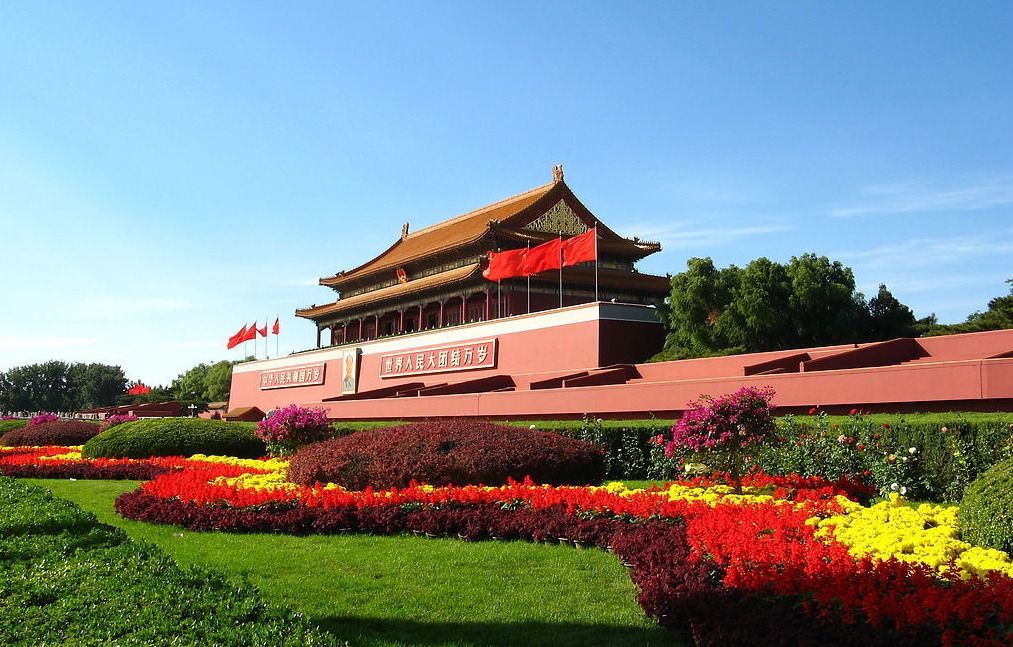
Peking (chinesisch 北京, Pinyin Běijīng, W.-G. Pei-ching auch Beijing, ![]() [pei˨˩tɕiŋ˥˥], deutsch historisch Pekingen[2]) ist die Hauptstadt der Volksrepublik China. Der Name bedeutet Nördliche Hauptstadt (vgl. Nanjing für Südliche Hauptstadt). Peking hat eine über dreitausendjährige Geschichte und ist heute eine regierungsunmittelbare Stadt, das heißt, sie ist direkt der Zentralregierung unterstellt und damit Provinzen, autonomen Gebieten und Sonderverwaltungszonen gleichgestellt.
[pei˨˩tɕiŋ˥˥], deutsch historisch Pekingen[2]) ist die Hauptstadt der Volksrepublik China. Der Name bedeutet Nördliche Hauptstadt (vgl. Nanjing für Südliche Hauptstadt). Peking hat eine über dreitausendjährige Geschichte und ist heute eine regierungsunmittelbare Stadt, das heißt, sie ist direkt der Zentralregierung unterstellt und damit Provinzen, autonomen Gebieten und Sonderverwaltungszonen gleichgestellt.
Das gesamte 16.807 Quadratkilometer große (etwas größer als Schleswig-Holstein) Verwaltungsgebiet Pekings hat 21,5 Millionen Einwohner (Stand: März 2016).[3] Es stellt kein zusammenhängendes Stadtgebiet dar, mit seiner dominierenden ländlichen Siedlungsstruktur ist es eher mit einer Provinz vergleichbar.[4] Von der Gesamtbevölkerung sind 11,8 Millionen registrierte Bewohner mit ständigem Wohnsitz (戶口 / 户口, hùkǒu) und 7,7 Millionen temporäre Einwohner (流動人口 / 流动人口, liúdòng rénkǒu) mit befristeter Aufenthaltsgenehmigung (暫住證 / 暂住证, zànzhùzhèng).[5] Wird die Kernstadt (hohe Bebauungsdichte und geschlossene Ortsform) als Grundlage genommen, leben in Peking 7,7 Millionen Menschen mit Hauptwohnsitz (2007).[6] Der Ballungsraum (einschließlich Vororte) hat 11,8 Millionen Einwohner (2007).[7] Ab 2017 soll die Metropole Kern einer Megalopolis von 130 Millionen Einwohnern namens Jing-Jin-Ji werden.
Peking stellt als Hauptstadt das politische Zentrum Chinas dar. Aufgrund der langen Geschichte beherbergt Peking ein bedeutendes Kulturerbe. Dies umfasst die traditionellen Wohnviertel mit Hutongs, den Tian’anmen-Platz (chinesisch Platz am Tor des Himmlischen Friedens), die 1987 von der UNESCO zum Weltkulturerbe erklärte Verbotene Stadt, den neuen und alten Sommerpalast und verschiedene Tempel, wie z. B. den Himmelstempel, den Lamatempel und den Konfuziustempel.(2012)
Beijing ist auch eine der berühmtesten kulturhistorischen Städte mit einer ereignisreichen Geschichte in der Welt und zählt zu den sieben alten Hauptstädten Chinas. Vor 700 000 Jahren lebten hier schon die sogenannten „Peking-Menschen". Die Stadt Beijing wurde 938 der provisorische Sitz der Liao-Dyna-stie (907-1125) und diente 800 Jahre lang als die Hauptstadt der Jin- (1115-1234), der Yuan-(1279-1368). der Ming-(1368-1644) und der Qing-Dynastie (1644-1911). Zahlreiche weltbekannte Sehenswürdigkeiten und historische Stätten sind auf den heutigen Tage erhalten geblieben, darunter der Kaiserpalast als größter Palastkomplex der Welt, die Große Mauer als eines der acht Weltwunder, der Himmelstempel als weltweit größter Opferaltar für den Himmel, die Ming-Gräber als konzentrierte kaiserliche Grabanlagen in der Welt und der Sommerpalast als weltweit größte kaiserliche Parkanlage.
Die Vororte Beijings sind von Bergen umgeben und haben schöne Landschaft. Dort sind alte Tempel, Teiche, Wasserfälle und dörfliches Idyll zu sehen. Darüber hinaus wird das Stadtbild von einer hohen Anzahl von modernen Gebäuden geprägt. Auch große Vergnügungsparks, Zoos, botanische Gärten, städtische öffentliche Plätze und Parks in der Stadt üben eine große Anziehungskraft auf Touristen aus.
北京市(ペキンし、中国語: 北京市、拼音: )は、中華人民共和国の首都である。
行政区画上は直轄市であり、中国の華北の中央に位置する。人口は2152万(2014年)であり、中国では上海に次ぐ第二の都市。世界有数のメガシティであり、極めて高い影響力を有する世界都市でもある。古くは大都・燕京・北平とも呼ばれた。
春秋戦国時代には燕の首都で薊(けい)と称された。周の国都洛陽からは遠く離れ、常に北方の匈奴などの遊牧民族の侵入による被害を受ける辺境であった。秦漢代には北平(ほくへい)と称されるが、満州開発が進み、高句麗など周辺国の勢力が強大となると、戦略上、また交易上の重要な拠点として重視されるようになった。北京市に隣接する河北省涿郡(たくぐん)は三国志の英雄劉備の故郷で知られるとともに隋の煬帝が築いた大運河の北の起点とされている。
唐末五代の騒乱期、内モンゴルから南下してきた遼朝は、後晋に対し軍事支援を行った代償として北京地方を含む燕雲十六州を割譲された。遼はこの都市を副都の一つ南京と定めた。その後金朝が遼を滅ぼし支配権を獲得すると、金は北京に都城を定め中都とした。更にモンゴル帝国(元朝)が金を滅ぼすと大都として元朝の都城となり、カラコルムに代わってモンゴル帝国の中心となった。
朱元璋が元を北方に駆逐し明朝が成立すると、名称は北平に戻され、都城は南京に定められた。しかし、燕王に封じられ北京を拠点とした朱棣(後の永楽帝)は、1402年に建文帝に対し軍事攻撃を行い政権を奪取。皇帝に即位した後北京遷都を実行し地名を北京に改めた。辛亥革命後は中華民国北洋政府は北京を首都と定めたが、南京を首都と定めた蒋介石を中心とする国民政府は、「政府直轄地域」を意味する直隷省を1928年6月15日に河北省へ、北の首都を意味する北京を北平(ほくへい、ベイピンBěipíng)へと、それぞれ改称した。1937年から1945年まで続いた日本軍占領期は北京の名称が用いられ(公式には1940年に改名)、日本の敗戦によって再び北平に改称された。
1949年10月1日の中華人民共和国成立により新中国の首都とされた北京(北平)は再び北京と改称され現在に至っている。しかし、中華人民共和国の存在を承認せず、南京を公式な首都として大陸地区への統治権を主張する中華民国(台湾)では、現在でも公式名称として「北平」の名称が用いられている。
Beijing (/beɪˈdʒɪŋ/;[10] Mandarin: [pèi.tɕíŋ] (![]() listen)), formerly romanized as Peking,[11] is the capital of the People's Republic of China, the world's third most populous city proper, and most populous capital city. The city, located in northern China, is governed as a municipality under the direct administration of central government with 16 urban, suburban, and rural districts.[12] Beijing Municipality is surrounded by Hebei Province with the exception of neighboring Tianjin Municipality to the southeast; together the three divisions form the Jingjinji metropolitan region and the national capital region of China.[13]
listen)), formerly romanized as Peking,[11] is the capital of the People's Republic of China, the world's third most populous city proper, and most populous capital city. The city, located in northern China, is governed as a municipality under the direct administration of central government with 16 urban, suburban, and rural districts.[12] Beijing Municipality is surrounded by Hebei Province with the exception of neighboring Tianjin Municipality to the southeast; together the three divisions form the Jingjinji metropolitan region and the national capital region of China.[13]
Beijing is an important capital and global power city, and one of the world's leading centers for politics, economy and business, finance, education, culture, innovation and technology, architecture, language, and diplomacy. A megacity, Beijing is the second largest Chinese city by urban population after Shanghai and is the nation's political, cultural, and educational center.[14] It is home to the headquarters of most of China's largest state-owned companies and houses the largest number of Fortune Global 500 companies in the world.[15] It is also a major hub for the national highway, expressway, railway, and high-speed rail networks. The Beijing Capital International Airport has been the second busiest in the world by passenger traffic since 2010,[16] and, as of 2016, the city's subway network is the busiest and second longest in the world.
Combining both modern and traditional architecture, Beijing is one of the oldest cities in the world, with a rich history dating back three millennia. As the last of the Four Great Ancient Capitals of China, Beijing has been the political center of the country for most of the past eight centuries,[17] and was the largest city in the world by population for much of the second millennium A.D.[18] Encyclopædia Britannica notes that "few cities in the world have served for so long as the political headquarters and cultural center of an area as immense as China."[19] With mountains surrounding the inland city on three sides, in addition to the old inner and outer city walls, Beijing was strategically poised and developed to be the residence of the emperor and thus was the perfect location for the imperial capital. The city is renowned for its opulent palaces, temples, parks, gardens, tombs, walls and gates.[20] It has seven UNESCO World Heritage Sites – the Forbidden City, Temple of Heaven, Summer Palace, Ming Tombs, Zhoukoudian, and parts of the Great Wall and the Grand Canal – all popular locations for tourism.[21] Siheyuans, the city's traditional housing style, and hutongs, the narrow alleys between siheyuans, are major tourist attractions and are common in urban Beijing.
Pékin2 (en chinois : 北京 ; pinyin : běijīng ; API : [pe˨˩˦i.tɕi˥ŋ] Écouter la prononciation en mandarin, littéralement « capitale du nord »), également appelée Beijing, est la capitale de la République populaire de Chine. Située dans le nord du pays, la municipalité de Pékin (北京市, abrégé en 北京), d'une superficie de 16 800 km2, borde la province du Hebei ainsi que la municipalité de Tianjin. Pékin est considérée comme le centre politique et culturel de la Chine, tandis que Hong Kong et Shanghai dominent au niveau économique.
D'abord ville périphérique de l'empire chinois sous les Han et les Tang, elle prend de l'importance lorsque les Jurchen, qui fondent la dynastie Jin, la choisissent comme leur capitale principale en 1153. Le prince mongol Kubilai Khan en fait de même sous le nom de Dadu (« grande métropole »), enfin les Ming y transfèrent leur administration en 1421, parachevant le choix de Pékin comme capitale de la Chine. Située à proximité de la Grande Muraille, Pékin abrite des monuments célèbres comme la Cité interdite et le Temple du ciel, qui sont inscrits au patrimoine mondial. De nombreuses réalisations architecturales et structurelles ont modifié la ville à l'occasion des Jeux olympiques d'été dont elle a été l'hôte en 2008. Beijing a été choisie par le CIO pour organiser les Jeux olympiques d'hiver de 2022 et sera la première ville à avoir accueilli les deux éditions de l'évènement sportif international.
Avec 21,15 millions d'habitants en 2013, Pékin est la deuxième ville la plus peuplée de Chine après Shanghai. La zone urbaine compte quant à elle 18 millions d'habitants. Le parler pékinois forme la base du mandarin standard. D'un point de vue économique, Pékin est la troisième ville de Chine par le PIB total derrière Shanghai et Hong Kong. Elle connaît une croissance économique très rapide, nettement plus de 10 % par an dans les années 2000. Un nouveau Central business district (CBD) est en construction.
Pechino (AFI: /peˈkino/[1]; in cinese 北京S, BěijīngP, letteralmente "capitale del nord", ) è la capitale della Cina e della municipalità omonima.
L'intera municipalità ha dimensioni pari a poco più della metà del Belgio avendone però quasi il doppio degli abitanti (21.516.000[senza fonte]). Pechino è la seconda città più popolata della Cina dopo Shanghai, la capitale di Stato più popolata al mondo, e la seconda città del mondo per popolazione. Confina esclusivamente con la provincia dell'Hebei e a sud-est con la municipalità di Tientsin.
Pekín, Pequín o Beijing (chino simplificado y tradicional: 北京, pinyin: Běijīng, Wade-Giles: Pei-ching, pronunciado: (![]() escuchar), literalmente «capital del Norte») es uno de los cuatro municipios que, junto con las veintidós provincias, cinco regiones autónomas y dos regiones administrativas especiales, conforman la República Popular China. Además Pekín es la capital del país y una de las ciudades más pobladas del mundo con 21 150 000 personas en 2013.2
escuchar), literalmente «capital del Norte») es uno de los cuatro municipios que, junto con las veintidós provincias, cinco regiones autónomas y dos regiones administrativas especiales, conforman la República Popular China. Además Pekín es la capital del país y una de las ciudades más pobladas del mundo con 21 150 000 personas en 2013.2
Situada en la periferia de la antigua civilización china, Pekín se convirtió en el baluarte de las potencias extranjeras que ocuparon China del Norte entre los siglos X y XII. La dinastía Liao estableció aquí su capital meridional, la más acreditada de las cinco del reino. La dinastía Jin, la siguiente dinastía "bárbara" emprendió un amplio proyecto urbanístico a imagen de la capital de los Song septentrionales, Kaifeng. En 1215 los mongoles arrasaron la ciudad, pero 50 años después Kublai Kan decidió edificar en ella la nueva capital.
En la zona centro-sur del trazado hipodámico se hallaba la colosal villa imperial que contenía el complejo de palacios imperiales. El emperador Yongle, el tercer Ming, decidió trasladar la capitalidad a Pekín. Las murallas del lado septentrional fueron trasladadas más hacia el Sur para que el complejo palaciego imperial, la llamada Ciudad Prohibida, quedase exactamente en el centro del plano. Así la estructura del nuevo Pekín representa la cima del urbanismo tradicional chino, basado en la organización introducida por los mongoles así como en la estructura de los palacios imperiales de Kaifeng y Nankín además de tomar en consideración las normas de la geomancia china (風水).
Pekín es uno de los cuatro municipios de China que poseen un estatus provincial y están bajo el control directo del gobierno central. Pekín ha sido municipalidad desde la creación de la República Popular China. Es una de las ciudades más pobladas de China, tan sólo superada por Shanghái en cuanto a población. Es considerada el corazón cultural, político y social de China.
Пеки́н (кит. 北京, пиньинь: Běijīng, палл.: Бэйцзин, буквально: «Северная столица») — столица и один из городов центрального подчинения Китайской Народной Республики. Пекин с трёх сторон окружён провинцией Хэбэй и граничит с Тяньцзинем на юго-востоке.
Это крупнейший железно- и автодорожный узел и один из основных авиаузлов страны. Кроме того, Пекин является политическим, образовательным и культурным центром КНР, в то время как главными экономическими центрами считаются Шанхай и Гонконг. Вместе с тем, в последнее время всё больше берёт на себя роль локомотива предпринимательской деятельности и основного поля для создания инновационных предприятий.
Входит в число четырёх древних столиц Китая. В 2008 году в городе прошли Летние Олимпийские игры. В 2022 году в городе пройдут Зимние Олимпийские игры.

 California State Route 1
California State Route 1

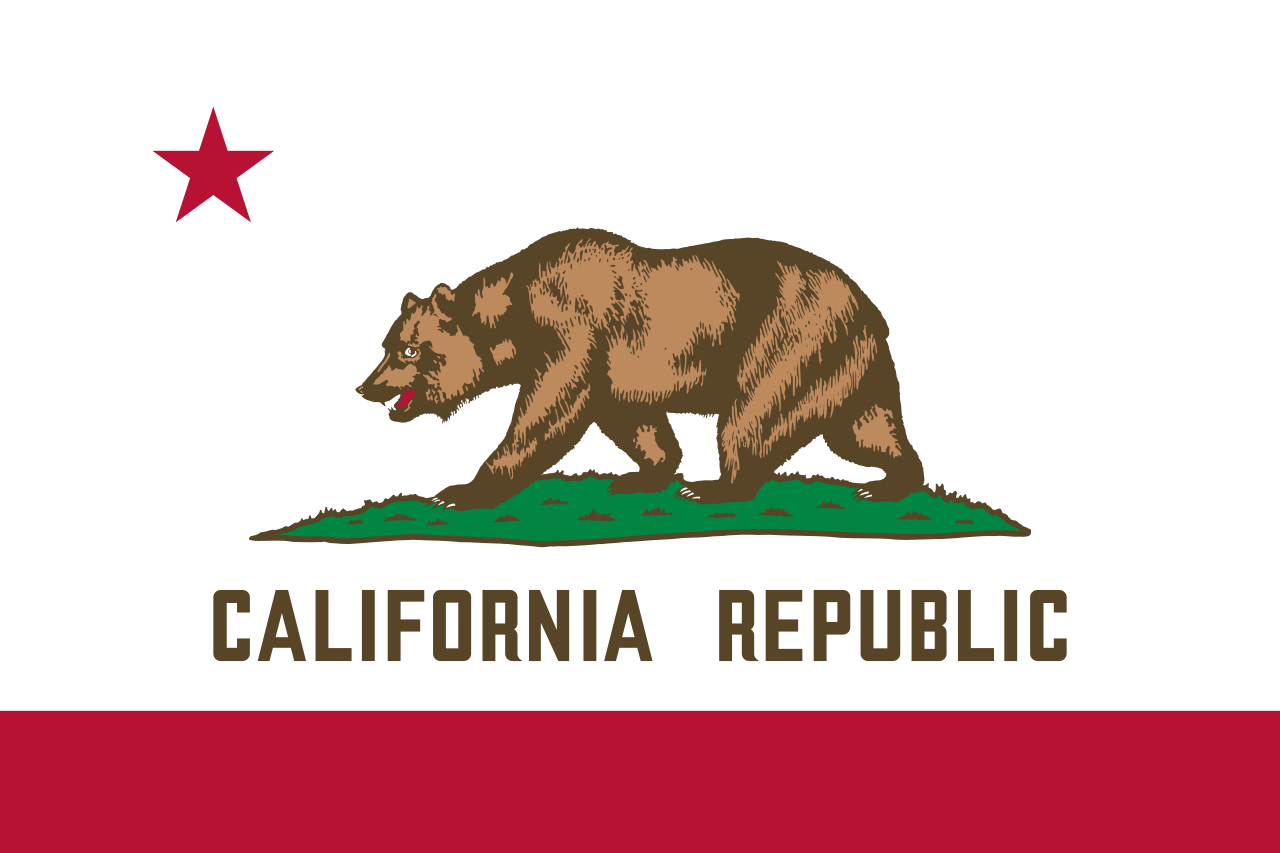 California-CA
California-CA

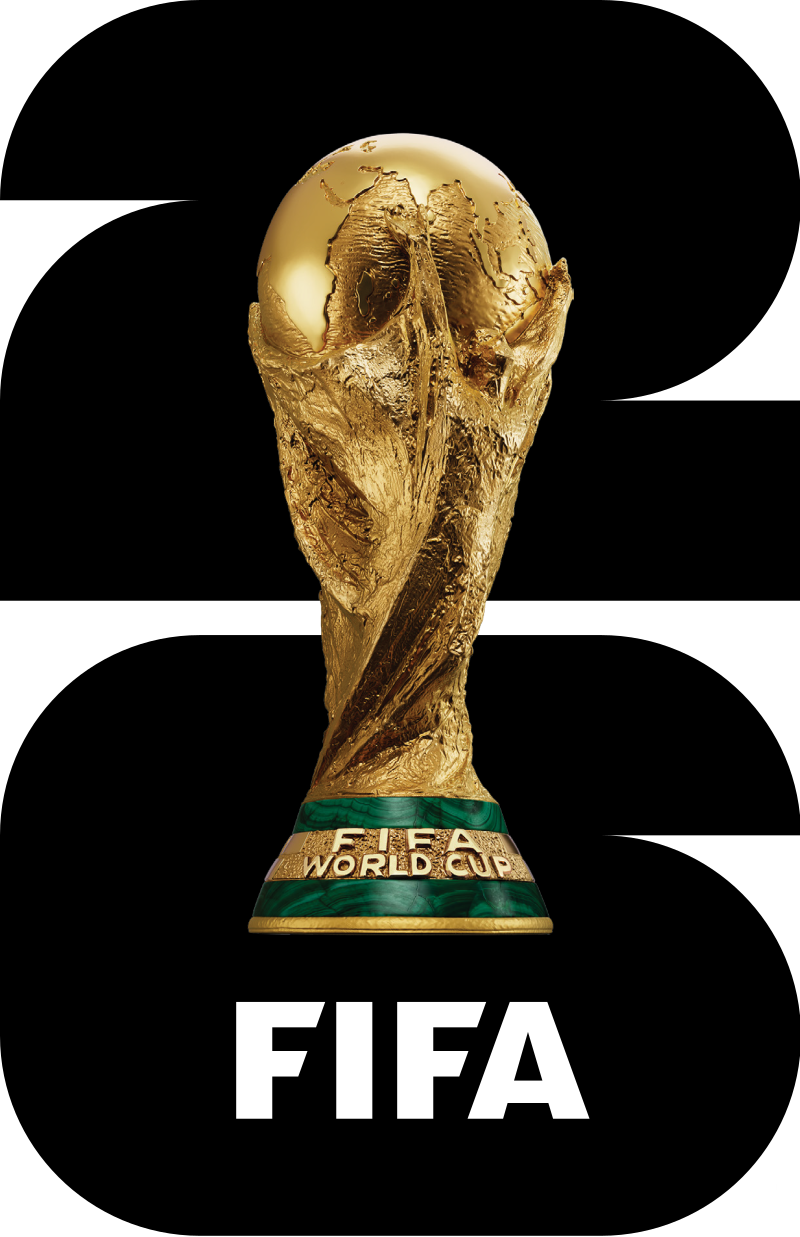 FIFA Fussball-Weltmeisterschaft 2026
FIFA Fussball-Weltmeisterschaft 2026

 Financial
Financial
 ***Global Financial Center
***Global Financial Center

 History
History
 N 2000 - 2100 AD
N 2000 - 2100 AD

 History
History
 M 1500 - 2000 AD
M 1500 - 2000 AD

 International cities
International cities
 ***Global Urban Economic Competitiveness
***Global Urban Economic Competitiveness
 League of Legends
League of Legends
 League of Legends World Championship
League of Legends World Championship
 Olympic Summer Games
Olympic Summer Games
 United States
United States

 Important port
Important port




洛杉矶(英语:City of Los Angeles,缩写为L.A.),简称洛城,是位于美国加利福尼亚州南部的都市,也是洛杉矶县的县治,人口约397万[8],为加州第一大城,同时也是美国人口第二大都市,仅次于纽约市。全市面积为469.1平方英里(1214.9平方公里)。由洛杉矶、长滩、安那翰3市组成的洛杉矶都会区拥有约1331万的人口[9],涵盖范围更广的大洛杉矶地区则达到1870万[10],两者在统计上均次于纽约都会区,为全美国第二大都会区。
洛杉矶在1781年由西属上加利福尼亚总督费利佩·德·内维建立。它曾先后属于西班牙与墨西哥,但在1848年美墨战争结束后,墨西哥将包括洛杉矶在内的上加利福尼亚地区割让给美国。1850年4月4日,洛杉矶正式建市,比加州加入联邦的时间早了5个月。时至今日,洛杉矶已发展成为全世界的文化、科学、技术、体育、国际贸易和高等教育中心之一,还拥有世界知名的各种专业与文化领域的机构。整个大洛杉矶地区在电影、电视、音乐等文化娱乐产业的蓬勃发展,构成了洛杉矶的国际声誉和全球地位的基础。截至2014年,洛杉矶的大都市生产总值达8605亿美元,排名世界第三。
Los Angeles [lɔs ˈændʒələs] (aus dem spanischen Los Ángeles [losˈaŋxeles] ‚Die Engel‘) oder auch kurz L.A., ist die größte Stadt im US-Bundesstaat Kalifornien. Sie liegt am Pazifischen Ozean und am Los Angeles River.
Los Angeles ist mit 3.928.864 Einwohnern (2014)[1] im Stadtgebiet nach New York City und vor Chicago die zweitgrößte Stadt der Vereinigten Staaten.[2] Mit 11,8 Millionen Einwohnern in der Agglomeration[3] sowie über 12,8 Millionen Einwohnern in der Metropolregion (Metropolitan Statistical Area) und knapp 17,8 Millionen in der erweiterten Metropolregion steht die Greater Los Angeles Area unter den größten Metropolregionen der Welt an 17. Stelle.[4] Die Einwohner von Los Angeles werden Angelenos [ændʒəˈlinoʊz] genannt.
Los Angeles ist Hauptstadt und Verwaltungssitz des Los Angeles County. Die Stadt ist das Wirtschafts-, Geschäfts- und Kulturzentrum Kaliforniens mit zahlreichen Universitäten, Hochschulen, Forschungsinstituten, Theatern und Museen. Los Angeles ist weltgrößter Standort für die Flugzeug- und Raumfahrtindustrie und bekannt wegen der dort ansässigen Film- und Fernsehindustrie (Hollywood) und Musikszene.
Die Metropolregion Los Angeles erbrachte 2016 eine Wirtschaftsleistung von 1,001 Billionen US-Dollar. Unter den Städten der Welt belegt es damit den dritten Rang hinter Tokio und New York City.[5]
ロサンゼルス(英語: Los Angeles、スペイン語も同じ)は、アメリカ合衆国カリフォルニア州にある都市。同州最大の都市かつ全米有数の世界都市であり、国内ではニューヨークに次いで人口が多い[1]。
Los Angeles (US: /lɔːs ˈændʒələs/ ( listen);[16][a] Spanish for "The Angels"; Spanish: Los Ángeles; Spanish: [los ˈaŋxeles]; officially the City of Los Angeles, known colloquially by its initials L.A.) is the second-most populous city in the United States, after New York City, and the most populous city in the Western United States. With an estimated population of four million,[17] Los Angeles is the largest and most populous city in the state of California and the cultural, financial, and commercial center of Southern California. Nicknamed the "City of Angels" partly because of its name's Spanish meaning, Los Angeles is known for its Mediterranean climate, ethnic diversity, and sprawling metropolis.
listen);[16][a] Spanish for "The Angels"; Spanish: Los Ángeles; Spanish: [los ˈaŋxeles]; officially the City of Los Angeles, known colloquially by its initials L.A.) is the second-most populous city in the United States, after New York City, and the most populous city in the Western United States. With an estimated population of four million,[17] Los Angeles is the largest and most populous city in the state of California and the cultural, financial, and commercial center of Southern California. Nicknamed the "City of Angels" partly because of its name's Spanish meaning, Los Angeles is known for its Mediterranean climate, ethnic diversity, and sprawling metropolis.
Los Angeles is located in a large basin bounded by the Pacific Ocean on one side and by mountains as high as 10,000 feet (3,000 m) on the others. The city proper, which covers about 469 square miles (1,210 km2),[18] is the seat of Los Angeles County, the most populated county in the country. Los Angeles is the principal city of the Los Angeles metropolitan area; with a population of 13.1 million residents it is the second largest in the United States after that of New York City.[19] It is part of the Los Angeles-Long Beach combined statistical area, also the second most populous in the nation with a 2015 estimated population of 18.7 million.[20]
Los Angeles is one of the most substantial economic engines within the United States, with a diverse economy in a broad range of professional and cultural fields. Los Angeles is also famous as the home of Hollywood, a major center of the world entertainment industry. A global city, it has been ranked 6th in the Global Cities Index and 9th in the Global Economic Power Index. The Los Angeles combined statistical area also has a gross metropolitan product of $831 billion (as of 2008), making it the third-largest in the world, after the Tokyo and New York metropolitan areas. Los Angeles hosted the 1932 and 1984 Summer Olympics and will host the event for a third time in 2028. The city also hosted the Miss Universe pageant twice, in 1990 and 2006.
Historically home to the Chumash and Tongva, Los Angeles was claimed by Juan Rodríguez Cabrillo for Spain in 1542 along with the rest of what would become Alta California. The city was officially founded on September 4, 1781, by Spanish governor Felipe de Neve. It became a part of Mexico in 1821 following the Mexican War of Independence. In 1848, at the end of the Mexican–American War, Los Angeles and the rest of California were purchased as part of the Treaty of Guadalupe Hidalgo, becoming part of the United States. Los Angeles was incorporated as a municipality on April 4, 1850, five months before California achieved statehood. The discovery of oil in the 1890s brought rapid growth to the city.[21] The completion of the Los Angeles Aqueduct in 1913, delivering water from Eastern California, later assured the city's continued rapid growth.
Los Angeles (prononcé en anglais américain [lɑs ˈæn.dʒə.ləs] Écouter)n 1 est la deuxième ville la plus peuplée des États-Unis après New York. Elle est située dans le sud de l'État de Californie, sur la côte pacifique. Les Américains l'appellent souvent par son diminutif, L.A. (prononcé [ˌɛlˈeɪ]). La ville est le siège du comté portant le même nom. Los Angeles signifie « les anges » en espagnol et ses habitants sont appelés Angelenos (quelquefois Angelinos) — les Angelins. Son nom complet est El Pueblo de Nuestra Señora la Reina de Los Ángeles del Río de Porciúncula, c'est-à-dire « le village de Notre-Dame la Reine des Anges du fleuve de Porciuncula », Porciuncula étant le nom donné au fleuve Los Angeles par les Amérindiens2.
Selon une estimation, la population de la commune est de 3 976 322 habitants en 2016, alors qu'elle n'était que de 11 500 en 1887. Le comté rassemble 10 179 716 habitants (en juillet 2004) alors que l'aire urbaine de Los Angeles compte environ 18,5 millions d’habitants3, ce qui en fait la deuxième agglomération des États-Unis après celle de New York. Mais la commune de Los Angeles est relativement restreinte face à son agglomération, même si elle est plus grande que New York et Chicago.
Los Angeles est une ville olympique : elle accueille les Jeux olympiques d'été deux fois (en 1932 et 1984), et les accueillera de nouveau en 2028. Mondialement connue pour son activité culturelle (notamment via la production cinématographique à Hollywood), elle a un statut de ville-région mondiale (world city-region)4 ; cosmopolite, elle demeure l'un des points d'entrée d'immigrants les plus importants aux États-Unis.
Los Angeles (pronuncia inglese [lɒs ˈændʒələs]; pronuncia italiana[4]: [loˈzɛndʒeles] o [loˈzandʒeles]; pronuncia spagnola [los ˈaŋxeles]), spesso abbreviata in L.A., è una città degli Stati Uniti d'America, capoluogo dell'omonima contea, situata nella California meridionale. Con 4 057 875 abitanti (nel 2017[3]), è la città più popolosa della California e la seconda più popolosa degli Stati Uniti d'America dopo New York.
Fondata dagli spagnoli come El Pueblo de Nuestra Señora la Reina de los Ángeles del Rio de la Porciúncula de Asís[5], ovvero "Il villaggio di santa Maria degli Angeli della Porziuncola di Assisi", assurse allo status di città il 9 giugno 1850, cinque mesi prima che la California diventasse il trentesimo Stato dell'Unione.
È un centro economico e scientifico di rilevanza internazionale. È inoltre la capitale mondiale dell'industria cinematografica, ospitata in uno dei sobborghi più famosi della città, Hollywood; a Los Angeles e dintorni risiedono numerosi personaggi del cinema e dello spettacolo americano e internazionale.
Los Ángeles (en inglés: Los Angeles, pronunciado AFI: [lɒs ˈændʒəˌləs]), oficialmente Ciudad de Los Ángeles y de manera abreviada L. A., es la ciudad más poblada del estado estadounidense de California y la segunda ciudad más poblada de Estados Unidos. Tiene, según el censo de 2010, una población de 3 792 621 habitantes.2 Está ubicada en el sur de California y abarca una superficie de 1215 km².
La ciudad es el centro del área estadística metropolitana de Los Ángeles-Long Beach-Santa Ana y del Gran Los Ángeles que, según el censo de 2010, sumaban una población de 13 y 18 millones de personas, respectivamente. Es, por tanto, una de las mayores áreas metropolitanas del mundo3 y la segunda de Estados Unidos.4 La ciudad también es la sede del condado de Los Ángeles, uno de los condados más poblados y étnicamente diversos del país;5 la propia ciudad de Los Ángeles es reconocida como una de las metrópolis más diversas del planeta.6 A sus habitantes les corresponde el gentilicio «angelinos/as».7
Los Ángeles fue fundada el 4 de septiembre de 1781 por el gobernador español Felipe de Neve con el nombre de «El Pueblo de Nuestra Señora la Reina de los Ángeles del Río de Porciúncula».8 En 1821, después de la guerra de independencia de México, la ciudad se integró como parte de México,9 pero en 1848, a consecuencia de la intervención estadounidense en México, Los Ángeles y el resto de la Alta California pasaron a ser parte de los Estados Unidos de América, de acuerdo con lo pactado en el Tratado de Guadalupe Hidalgo.10 La ciudad se incorporó a la Unión como municipio el 4 de abril de 1850, cinco meses antes de que California alcanzara la categoría de estado de los Estados Unidos.11
Los Ángeles es una ciudad global con gran influencia en ámbitos tan diversos como los negocios, el comercio internacional, el entretenimiento, la cultura, los medios de comunicación, la moda, la ciencia, los deportes, la tecnología, la educación, la medicina o la investigación. En la ciudad tienen su sede instituciones de renombre que abarcan diversos campos profesionales y culturales, y es uno de los motores económicos más importantes de Estados Unidos. El área estadística combinada de Los Ángeles sumaba en 2008 un producto regional bruto de 831 000 millones de USD, el tercero más importante del mundo tras Tokio y Nueva York.12 Los Ángeles, dentro de la cual se encuentra Hollywood, es líder mundial en la creación de producciones de televisión, videojuegos, música y cine que triunfan en todo el planeta. Además, la ciudad ha sido sede en dos ocasiones de los Juegos Olímpicos de Verano, en 1932 y en 1984, y lo será por tercera vez en 2028.
 California State Route 1
California State Route 1

 FIFA Fussball-Weltmeisterschaft 2026
FIFA Fussball-Weltmeisterschaft 2026

 Financial
Financial
 ***Global Financial Center
***Global Financial Center

 History
History
 N 2000 - 2100 AD
N 2000 - 2100 AD

 History
History
 M 1500 - 2000 AD
M 1500 - 2000 AD

 International cities
International cities
 ***Global Urban Economic Competitiveness
***Global Urban Economic Competitiveness
 League of Legends
League of Legends
 League of Legends World Championship
League of Legends World Championship
 Olympic Summer Games
Olympic Summer Games
 1932 Summer Olympics
1932 Summer Olympics
 1984 Summer Olympics
1984 Summer Olympics
 2028 Summer Olympics
2028 Summer Olympics
 United States
United States

 Important port
Important port
Los Angeles [lɔs ˈændʒələs] (aus dem spanischen Los Ángeles [losˈaŋxeles] ‚Die Engel‘) oder auch kurz L.A., ist die größte Stadt im US-Bundesstaat Kalifornien. Sie liegt am Pazifischen Ozean und am Los Angeles River.
Los Angeles ist mit 3.928.864 Einwohnern (2014)[1] im Stadtgebiet nach New York City und vor Chicago die zweitgrößte Stadt der Vereinigten Staaten.[2] Mit 11,8 Millionen Einwohnern in der Agglomeration[3] sowie über 12,8 Millionen Einwohnern in der Metropolregion (Metropolitan Statistical Area) und knapp 17,8 Millionen in der erweiterten Metropolregion steht die Greater Los Angeles Area unter den größten Metropolregionen der Welt an 17. Stelle.[4] Die Einwohner von Los Angeles werden Angelenos [ændʒəˈlinoʊz] genannt.
Los Angeles ist Hauptstadt und Verwaltungssitz des Los Angeles County. Die Stadt ist das Wirtschafts-, Geschäfts- und Kulturzentrum Kaliforniens mit zahlreichen Universitäten, Hochschulen, Forschungsinstituten, Theatern und Museen. Los Angeles ist weltgrößter Standort für die Flugzeug- und Raumfahrtindustrie und bekannt wegen der dort ansässigen Film- und Fernsehindustrie (Hollywood) und Musikszene.
Die Metropolregion Los Angeles erbrachte 2016 eine Wirtschaftsleistung von 1,001 Billionen US-Dollar. Unter den Städten der Welt belegt es damit den dritten Rang hinter Tokio und New York City.[5]
洛杉矶(英语:City of Los Angeles,缩写为L.A.),简称洛城,是位于美国加利福尼亚州南部的都市,也是洛杉矶县的县治,人口约397万[8],为加州第一大城,同时也是美国人口第二大都市,仅次于纽约市。全市面积为469.1平方英里(1214.9平方公里)。由洛杉矶、长滩、安那翰3市组成的洛杉矶都会区拥有约1331万的人口[9],涵盖范围更广的大洛杉矶地区则达到1870万[10],两者在统计上均次于纽约都会区,为全美国第二大都会区。
洛杉矶在1781年由西属上加利福尼亚总督费利佩·德·内维建立。它曾先后属于西班牙与墨西哥,但在1848年美墨战争结束后,墨西哥将包括洛杉矶在内的上加利福尼亚地区割让给美国。1850年4月4日,洛杉矶正式建市,比加州加入联邦的时间早了5个月。时至今日,洛杉矶已发展成为全世界的文化、科学、技术、体育、国际贸易和高等教育中心之一,还拥有世界知名的各种专业与文化领域的机构。整个大洛杉矶地区在电影、电视、音乐等文化娱乐产业的蓬勃发展,构成了洛杉矶的国际声誉和全球地位的基础。截至2014年,洛杉矶的大都市生产总值达8605亿美元,排名世界第三。
ロサンゼルス(英語: Los Angeles、スペイン語も同じ)は、アメリカ合衆国カリフォルニア州にある都市。同州最大の都市かつ全米有数の世界都市であり、国内ではニューヨークに次いで人口が多い[1]。
Los Angeles (US: /lɔːs ˈændʒələs/ (![]() listen);[16][a] Spanish for "The Angels"; Spanish: Los Ángeles; Spanish: [los ˈaŋxeles]; officially the City of Los Angeles, known colloquially by its initials L.A.) is the second-most populous city in the United States, after New York City, and the most populous city in the Western United States. With an estimated population of four million,[17] Los Angeles is the largest and most populous city in the state of California and the cultural, financial, and commercial center of Southern California. Nicknamed the "City of Angels" partly because of its name's Spanish meaning, Los Angeles is known for its Mediterranean climate, ethnic diversity, and sprawling metropolis.
listen);[16][a] Spanish for "The Angels"; Spanish: Los Ángeles; Spanish: [los ˈaŋxeles]; officially the City of Los Angeles, known colloquially by its initials L.A.) is the second-most populous city in the United States, after New York City, and the most populous city in the Western United States. With an estimated population of four million,[17] Los Angeles is the largest and most populous city in the state of California and the cultural, financial, and commercial center of Southern California. Nicknamed the "City of Angels" partly because of its name's Spanish meaning, Los Angeles is known for its Mediterranean climate, ethnic diversity, and sprawling metropolis.
Los Angeles is located in a large basin bounded by the Pacific Ocean on one side and by mountains as high as 10,000 feet (3,000 m) on the others. The city proper, which covers about 469 square miles (1,210 km2),[18] is the seat of Los Angeles County, the most populated county in the country. Los Angeles is the principal city of the Los Angeles metropolitan area; with a population of 13.1 million residents it is the second largest in the United States after that of New York City.[19] It is part of the Los Angeles-Long Beach combined statistical area, also the second most populous in the nation with a 2015 estimated population of 18.7 million.[20]
Los Angeles is one of the most substantial economic engines within the United States, with a diverse economy in a broad range of professional and cultural fields. Los Angeles is also famous as the home of Hollywood, a major center of the world entertainment industry. A global city, it has been ranked 6th in the Global Cities Index and 9th in the Global Economic Power Index. The Los Angeles combined statistical area also has a gross metropolitan product of $831 billion (as of 2008), making it the third-largest in the world, after the Tokyo and New York metropolitan areas. Los Angeles hosted the 1932 and 1984 Summer Olympics and will host the event for a third time in 2028. The city also hosted the Miss Universe pageant twice, in 1990 and 2006.
Historically home to the Chumash and Tongva, Los Angeles was claimed by Juan Rodríguez Cabrillo for Spain in 1542 along with the rest of what would become Alta California. The city was officially founded on September 4, 1781, by Spanish governor Felipe de Neve. It became a part of Mexico in 1821 following the Mexican War of Independence. In 1848, at the end of the Mexican–American War, Los Angeles and the rest of California were purchased as part of the Treaty of Guadalupe Hidalgo, becoming part of the United States. Los Angeles was incorporated as a municipality on April 4, 1850, five months before California achieved statehood. The discovery of oil in the 1890s brought rapid growth to the city.[21] The completion of the Los Angeles Aqueduct in 1913, delivering water from Eastern California, later assured the city's continued rapid growth.
Los Angeles (prononcé en anglais américain [lɑs ˈæn.dʒə.ləs] Écouter)n 1 est la deuxième ville la plus peuplée des États-Unis après New York. Elle est située dans le sud de l'État de Californie, sur la côte pacifique. Les Américains l'appellent souvent par son diminutif, L.A. (prononcé [ˌɛlˈeɪ]). La ville est le siège du comté portant le même nom. Los Angeles signifie « les anges » en espagnol et ses habitants sont appelés Angelenos (quelquefois Angelinos) — les Angelins. Son nom complet est El Pueblo de Nuestra Señora la Reina de Los Ángeles del Río de Porciúncula, c'est-à-dire « le village de Notre-Dame la Reine des Anges du fleuve de Porciuncula », Porciuncula étant le nom donné au fleuve Los Angeles par les Amérindiens2.
Selon une estimation, la population de la commune est de 3 976 322 habitants en 2016, alors qu'elle n'était que de 11 500 en 1887. Le comté rassemble 10 179 716 habitants (en juillet 2004) alors que l'aire urbaine de Los Angeles compte environ 18,5 millions d’habitants3, ce qui en fait la deuxième agglomération des États-Unis après celle de New York. Mais la commune de Los Angeles est relativement restreinte face à son agglomération, même si elle est plus grande que New York et Chicago.
Los Angeles est une ville olympique : elle accueille les Jeux olympiques d'été deux fois (en 1932 et 1984), et les accueillera de nouveau en 2028. Mondialement connue pour son activité culturelle (notamment via la production cinématographique à Hollywood), elle a un statut de ville-région mondiale (world city-region)4 ; cosmopolite, elle demeure l'un des points d'entrée d'immigrants les plus importants aux États-Unis.
Los Angeles (pronuncia inglese [lɒs ˈændʒələs]; pronuncia italiana[4]: [loˈzɛndʒeles] o [loˈzandʒeles]; pronuncia spagnola [los ˈaŋxeles]), spesso abbreviata in L.A., è una città degli Stati Uniti d'America, capoluogo dell'omonima contea, situata nella California meridionale. Con 4 057 875 abitanti (nel 2017[3]), è la città più popolosa della California e la seconda più popolosa degli Stati Uniti d'America dopo New York.
Fondata dagli spagnoli come El Pueblo de Nuestra Señora la Reina de los Ángeles del Rio de la Porciúncula de Asís[5], ovvero "Il villaggio di santa Maria degli Angeli della Porziuncola di Assisi", assurse allo status di città il 9 giugno 1850, cinque mesi prima che la California diventasse il trentesimo Stato dell'Unione.
È un centro economico e scientifico di rilevanza internazionale. È inoltre la capitale mondiale dell'industria cinematografica, ospitata in uno dei sobborghi più famosi della città, Hollywood; a Los Angeles e dintorni risiedono numerosi personaggi del cinema e dello spettacolo americano e internazionale.
Los Ángeles (en inglés: Los Angeles, pronunciado AFI: [lɒs ˈændʒəˌləs]), oficialmente Ciudad de Los Ángeles y de manera abreviada L. A., es la ciudad más poblada del estado estadounidense de California y la segunda ciudad más poblada de Estados Unidos. Tiene, según el censo de 2010, una población de 3 792 621 habitantes.2 Está ubicada en el sur de California y abarca una superficie de 1215 km².
La ciudad es el centro del área estadística metropolitana de Los Ángeles-Long Beach-Santa Ana y del Gran Los Ángeles que, según el censo de 2010, sumaban una población de 13 y 18 millones de personas, respectivamente. Es, por tanto, una de las mayores áreas metropolitanas del mundo3 y la segunda de Estados Unidos.4 La ciudad también es la sede del condado de Los Ángeles, uno de los condados más poblados y étnicamente diversos del país;5 la propia ciudad de Los Ángeles es reconocida como una de las metrópolis más diversas del planeta.6 A sus habitantes les corresponde el gentilicio «angelinos/as».7
Los Ángeles fue fundada el 4 de septiembre de 1781 por el gobernador español Felipe de Neve con el nombre de «El Pueblo de Nuestra Señora la Reina de los Ángeles del Río de Porciúncula».8 En 1821, después de la guerra de independencia de México, la ciudad se integró como parte de México,9 pero en 1848, a consecuencia de la intervención estadounidense en México, Los Ángeles y el resto de la Alta California pasaron a ser parte de los Estados Unidos de América, de acuerdo con lo pactado en el Tratado de Guadalupe Hidalgo.10 La ciudad se incorporó a la Unión como municipio el 4 de abril de 1850, cinco meses antes de que California alcanzara la categoría de estado de los Estados Unidos.11
Los Ángeles es una ciudad global con gran influencia en ámbitos tan diversos como los negocios, el comercio internacional, el entretenimiento, la cultura, los medios de comunicación, la moda, la ciencia, los deportes, la tecnología, la educación, la medicina o la investigación. En la ciudad tienen su sede instituciones de renombre que abarcan diversos campos profesionales y culturales, y es uno de los motores económicos más importantes de Estados Unidos. El área estadística combinada de Los Ángeles sumaba en 2008 un producto regional bruto de 831 000 millones de USD, el tercero más importante del mundo tras Tokio y Nueva York.12 Los Ángeles, dentro de la cual se encuentra Hollywood, es líder mundial en la creación de producciones de televisión, videojuegos, música y cine que triunfan en todo el planeta. Además, la ciudad ha sido sede en dos ocasiones de los Juegos Olímpicos de Verano, en 1932 y en 1984, y lo será por tercera vez en 2028.

 IT-Times
IT-Times
 Games
Games
 Companies
Companies
